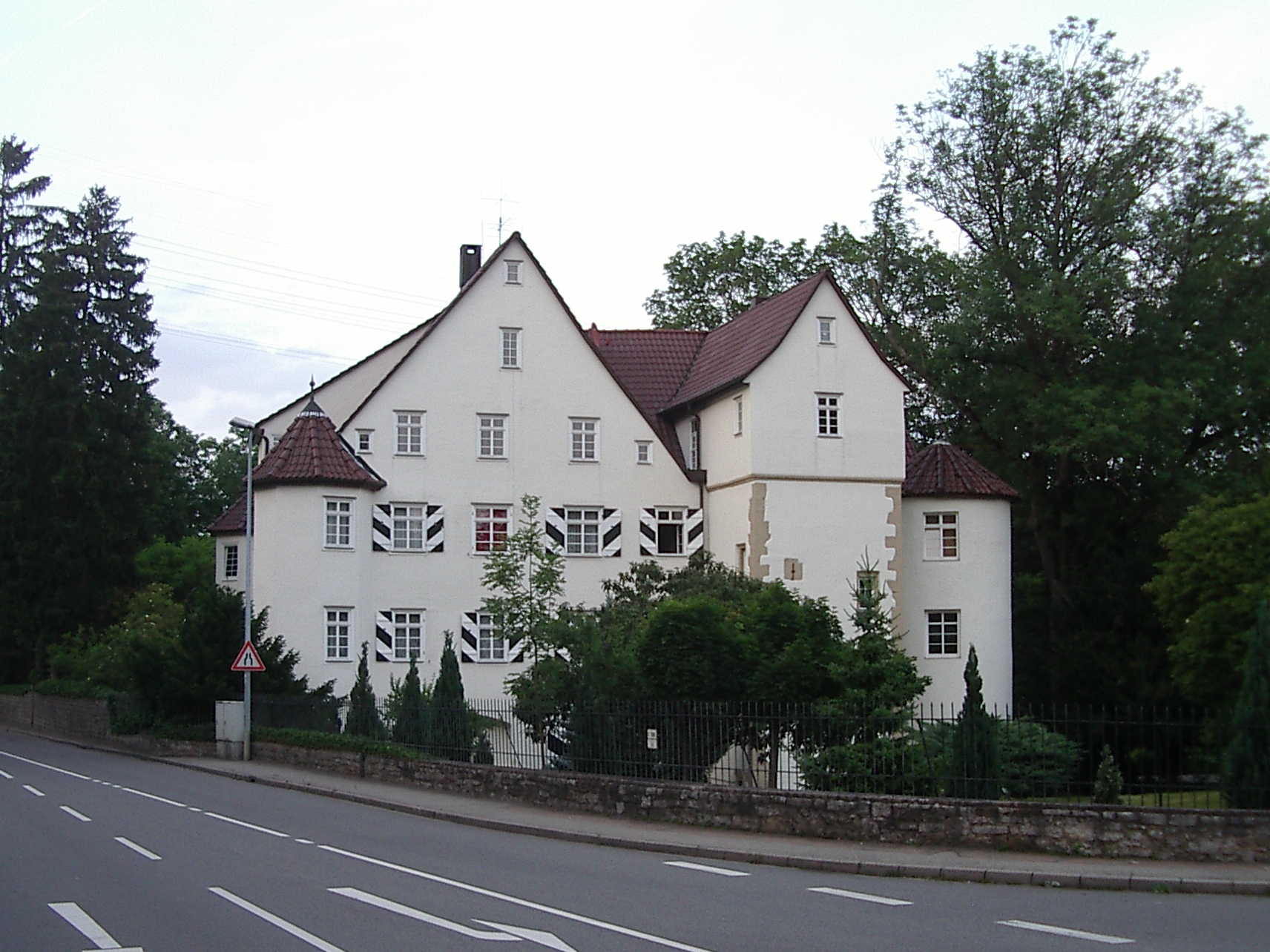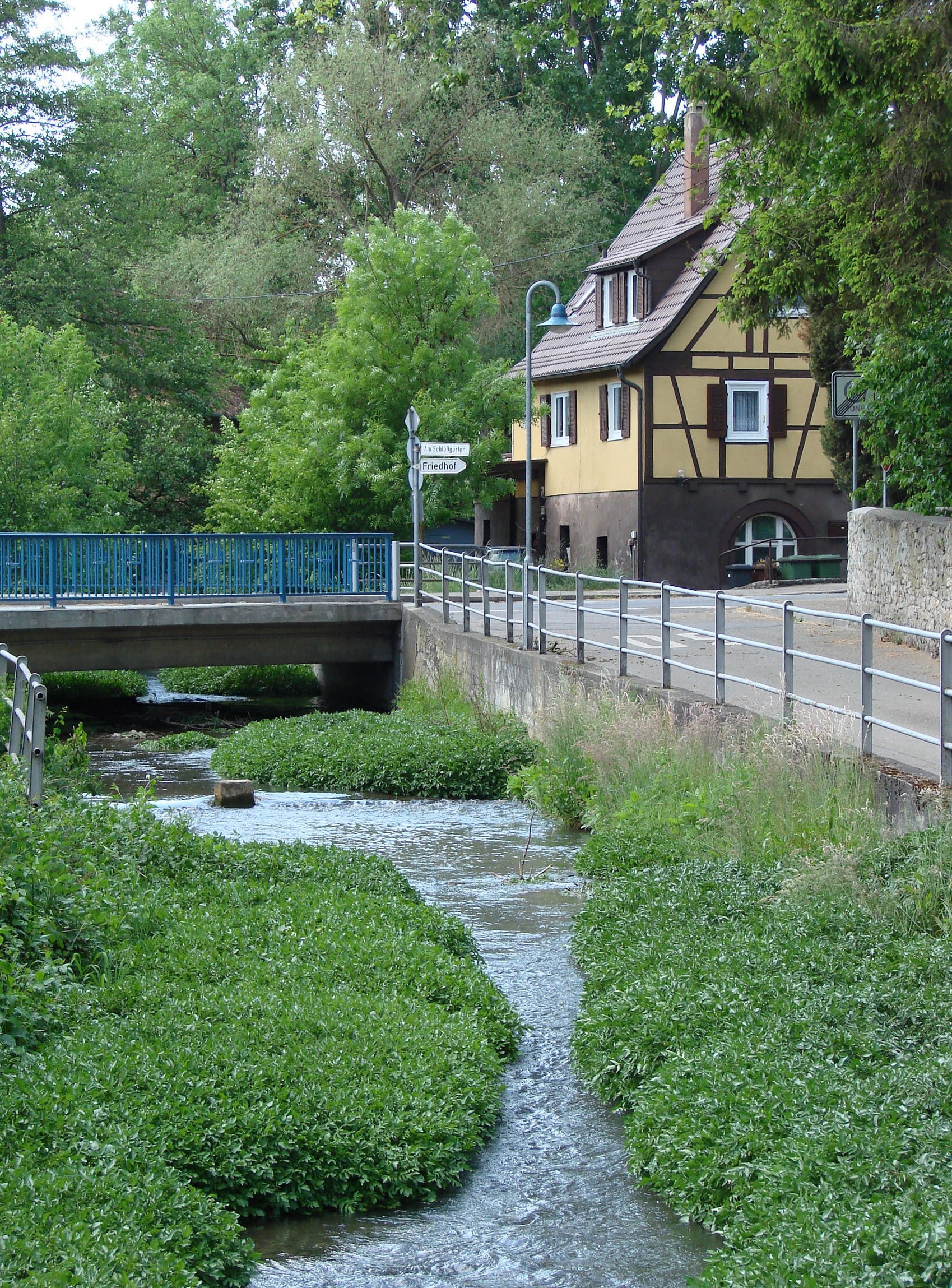Riet, Germany on:
[Wikipedia]
[Google]
[Amazon]
Riet is a village in the town of

 Today, the pump house is a popular meeting place and event location of the association Dörfliche Entwicklung Riet DER e. V.
Today, the pump house is a popular meeting place and event location of the association Dörfliche Entwicklung Riet DER e. V.
Lorscher Codex (Band 4), Urkunde 2397, 1. November 812 – Reg. 3018
'' In: ''Heidelberger historische Bestände – digital.'' Universitätsbibliothek Heidelberg, S. 125, retrieved 13 February 2018. # ↑ Peter Wanner: ''Der staufisch-kastilische Ehepakt des Jahres 1188. Erkenntnisse aus Anlass einiger "kleiner" Stadtteils- und Gemeindejubiläen 2013''. In: Christhard Schrenk/Peter Wanner (Hrsg.): ''heilbronnica 6. Beiträge zur Stadt- und Regionalgeschichte''. Heilbronn 2016, S. 453–460, hier: S. 458–459
PDF
366 kB. # ↑ Statistisches Bundesamt (Hrsg.): . W. Kohlhammer, Stuttgart/Mainz 1983, {{ISBN, 3-17-003263-1, S. 458.
Commons: Riet
'' – Collection of images, videos and audio files
Riet from then until now
Ludwigsburg (district)
Vaihingen an der Enz
Vaihingen an der Enz is a town located between Stuttgart and Karlsruhe, in southern Germany, on the western periphery of the Stuttgart Region. Vaihingen is situated on the river Enz, and has a population of around 30,000. The former district-c ...
, Germany
Germany,, officially the Federal Republic of Germany, is a country in Central Europe. It is the second most populous country in Europe after Russia, and the most populous member state of the European Union. Germany is situated betwe ...
. The population is around 900, and it is about south of central Vaihingen.
Geography
Location
Riet is located in a valley which runs in a south–north direction on theStrudelbach
Strudelbach is a river of Baden-Württemberg, Germany.
Geography
The source of the river is in the grounds of Weissach in Böblingen and flows in a narrow, northeasterly direction. It can reach a depth of 100m into the landscape Strudelbachtal ...
, a southern tributary of the Enz
The Enz is a river flowing north from the Black Forest to the Neckar in Baden-Württemberg.
It is 106 km long.
Its headstreams – the Little Enz (german: Kleine Enz) and the Great Enz or Big Enz (''Große Enz'') – rise in the Northern B ...
. While previously located near the center of the old district of Vaihingen, due to a district reform it is now on the western edge of the district of Ludwigsburg
Ludwigsburg (; Swabian: ''Ludisburg'') is a city in Baden-Württemberg, Germany, about north of Stuttgart city centre, near the river Neckar. It is the largest and primary city of the Ludwigsburg district with about 88,000 inhabitants. It is s ...
.
Riet lies on the German Timber-Frame Road
The German Timber-Frame Road (German: ''Deutsche Fachwerkstraße'') is a German tourist route leading from the river Elbe in the north to the Black Forest and Lake Constance in the south. Numerous cities and towns each with examples of the vernacu ...
.
Surroundings
The nearest surrounding villages areEnzweihingen
Enzweihingen is a village, part of the town of Vaihingen an der Enz, Germany. It has a population of 3,951 people (2021). Enzweihingen lies about three miles southeast of the centre of Vaihingen, between Strohgäu and Heckengäu, at the confluenc ...
, Hochdorf an der Enz, Eberdingen, and Nußdorf. The landscape is characterized by a deep valley, deciduous and mixed forests, and steppe heath. Agriculture occupies a relatively small part of the area.
Around the village, terraced vineyards are planted on the steep slopes, which today are mostly overgrown and only occasionally cultivated voluntarily by locals.
History
Origins
Celtic burial mounds in the Riet district provide evidence that the area was settled as early as the first millennium B.C.E. There is also evidence of later Roman settlement. The first documented mention of Riet is found in theLorsch Codex
The Lorsch Codex (Chronicon Laureshamense, Lorscher Codex, Codex Laureshamensis) is an important historical document created between about 1175 to 1195 AD in the Monastery of Saint Nazarius in Lorsch, Germany. The codex is handwritten in Carol ...
as Villa Reoth (or village of Riet) for a donation towards the Lorsch Monastery.
The origin of the village's name is not certain. A linguistic shift from Villa Roth is possible, as well as the modification from Ried as a reference to an area that was originally marshy. Or the modification of Reuth or Reutte as a reference to the clearing of a forest area, which is most likely, given the type of terrain and vegetation.
Riet in Medieval Times
In 1188, a ''castrum'' (eng.:castle) Riet is mentioned in a contract between Emperor Frederick I Barbarossa and King Alfonso VIII of Castile, in which the marriage between Frederick's son Konrad and Alfonso's daughter Berengaria was agreed. This castle, believed to be in Riet near Vaihingen, was part of the bride's morning gift along with another 29Hohenstaufen
The Hohenstaufen dynasty (, , ), also known as the Staufer, was a noble family of unclear origin that rose to rule the Duchy of Swabia from 1079, and to royal rule in the Holy Roman Empire during the Middle Ages from 1138 until 1254. The dynast ...
estates. However, this marriage was never put into practice.
Strudelbach in Riet
In Riet, in addition to the today still preserved, inhabited, and once moated castle, there were three other castles. One was located approximately on the site of today's community center on the village square. Remains of foundation walls found during construction work suggest that the other two castles stood at the southern and northern ends of today's Paracelsus Street.
Riet is historically connected to Eberdingen and Nußdorf via the noble family of the Counts of Reischach, who were owners of Riet for several times over a long part of its history.
The village of Riet was inhabited mainly by servants of the castles, who also cultivated the vineyards of the castle estate. Therefore, other agriculture (farming, animal husbandry) never played a significant role.
From the 14th century, Riet belonged to the bailiwick of Vaihingen and its successors Oberamt, Kreis, and so on, and was incorporated into Vaihingen in 1973.
Riet in the Industrial Age
After the castles and noble houses ceased to be the main employers, the citizens of Rieter oriented themselves strongly towards the new industrial centers of Vaihingen and the greater Stuttgart area. The Flattich haulage company, which had been established in the village in the 1920s, provided good transport links. Wappen Riet On February 1, 1972, Riet was incorporated into the city of Vaihingen an der Enz.https://de.wikipedia.org/wiki/Spezial:ISBN Suche/3170032631Coat of Arms
The former municipalcoat of arms
A coat of arms is a heraldic visual design on an escutcheon (i.e., shield), surcoat, or tabard (the latter two being outer garments). The coat of arms on an escutcheon forms the central element of the full heraldic achievement, which in its ...
of Riet depicts a lying golden stag on a black shield head, below on a golden shield a sloping black small hoe.
The stag shows the affiliation to Württemberg
Württemberg ( ; ) is a historical German territory roughly corresponding to the cultural and linguistic region of Swabia. The main town of the region is Stuttgart.
Together with Baden and Hohenzollern, two other historical territories, Württ ...
, the small hoe refers to the history of Riet as a wine village.
The coat of arms in its present form and the blue-yellow flag were awarded in 1966.
In a service seal from the 1920s, the coat of arms of Riet is depicted with three stags.
Infrastructure
Economy
Riet not only provides skilled workers for nearby large companies such as Bosch orBehr
Behr is a given name and surname that derives from the German ''Bär'' (''bear''). Older forms of the name, ''Bela'' and ''Belo'' (related to the old High German ''Belo''), occur in the Memorbuch. The diminutive forms ''Baeril'' ''(Berel)'' and ' ...
, several companies also settled in Riet. Among the largest are the bus company Flattich, the company Holzbau Leibfried, the forwarding agencies Hauser and Munz, and until 2003 the aluminum foundry and stamping company Hauser. In addition, there are several small craft businesses and commercial enterprises (e.g. beverage market, village store, farm store, flower store).
Well known far beyond Riet was the Gasthaus zur Eintracht, an inn and restaurant, on the village square. The second restaurant in the village is the restaurant Zum Strudelbächle.
Public Life
There is a kindergarten and an elementary school in the village. A citizens' office as a branch of the town hall is located on the village square.Clubs and Communities of Interest
Riet has several clubs, some with a long history, including the sports club SV Riet e. V.Landmarks
The Castle
The castle used to have a circumferential, deep, brick moat, which could be flooded at short notice with water from the Strudelbach stream in an emergency. During the Second World War, the castle was accommodation for some bombed-out citizens ofPforzheim
Pforzheim () is a city of over 125,000 inhabitants in the federal state of Baden-Württemberg, in the southwest of Germany.
It is known for its jewelry and watch-making industry, and as such has gained the nickname "Goldstadt" ("Golden City") ...
and Stuttgart, and later also for displaced persons.
The Parish Hall/Community Center
The parish hall, which was the rectory until the 1980s, stands on the site of a former castle of Riet.St. Stephen's Church
In the church there is still a wooden column of the Count's chair with the coat of arms of the Lords of Reischach.The Pump House
The pump house served the water supply of Nußdorf and was designed by Oesterlen&Schmid, Esslingen, in 1902 and built in 1905. At the level of today's Robert-Bosch-Strasse, a 130 m long water channel made of sheet steel diverted water from the Strudelbach stream and led it to the pump house. There, with a head of approx. 1.5 m, the pump system was operated via a medium-gearedwater wheel
A water wheel is a machine for converting the energy of flowing or falling water into useful forms of power, often in a watermill. A water wheel consists of a wheel (usually constructed from wood or metal), with a number of blades or bucket ...
, which pumped around 107 m3 of river water per day to Nußdorf as drinking water at a rate of 2.4 L/s. The water was then pumped into the pump house. In the 1960s, Nußdorf was connected to the public water network and as a result, the pump house was shut down.
 Today, the pump house is a popular meeting place and event location of the association Dörfliche Entwicklung Riet DER e. V.
Today, the pump house is a popular meeting place and event location of the association Dörfliche Entwicklung Riet DER e. V.
Famous Names
Wilhelm von Hohenheim von Riet, physician, father of Theophrastus Bombastus Paracelsus. Paracelsus himself is said to have lived with his uncle in Riet for several years. Kimsy von Reischach, former MTV Europe presenter, lives with her husband Marcus Lambkin (also known as DJ Shit Robot) in the parental castle Riet.Literature
* Rieth. In: Karl Eduard Paulus (ed.): Beschreibung des Oberamts Vaihingen (= Die Württembergischen Oberamtsbeschreibungen 1824–1886. Vol. 37). Eduard Hallberger, Stuttgart 1856, pp. 214–220 (full text nowiki/>Wikisource.html" ;"title="Wikisource.html" ;"title="nowiki/>Wikisource">nowiki/>Wikisource">Wikisource.html" ;"title="nowiki/>Wikisource">nowiki/>Wikisource.References
# ↑ Minst, Karl Josef [Übers.]:Lorscher Codex (Band 4), Urkunde 2397, 1. November 812 – Reg. 3018
'' In: ''Heidelberger historische Bestände – digital.'' Universitätsbibliothek Heidelberg, S. 125, retrieved 13 February 2018. # ↑ Peter Wanner: ''Der staufisch-kastilische Ehepakt des Jahres 1188. Erkenntnisse aus Anlass einiger "kleiner" Stadtteils- und Gemeindejubiläen 2013''. In: Christhard Schrenk/Peter Wanner (Hrsg.): ''heilbronnica 6. Beiträge zur Stadt- und Regionalgeschichte''. Heilbronn 2016, S. 453–460, hier: S. 458–459
366 kB. # ↑ Statistisches Bundesamt (Hrsg.): . W. Kohlhammer, Stuttgart/Mainz 1983, {{ISBN, 3-17-003263-1, S. 458.
Links
'Commons: Riet
'' – Collection of images, videos and audio files
Riet from then until now
Ludwigsburg (district)